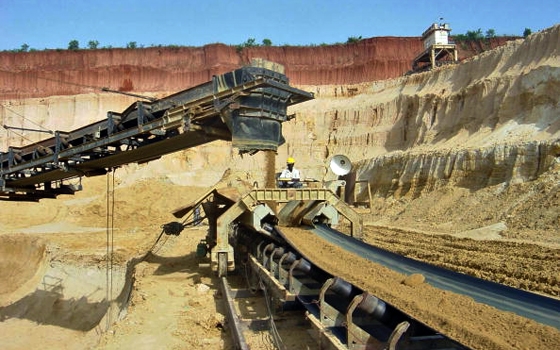Falling sales and rising costs are pushing segments of Jordan’s mining industry to broaden their client base and expand value-added activities.
In late July, the Jordan Phosphate Mines Company (JPMC) unveiled plans to develop two new downstream production facilities, announcing it had signed a memorandum of understanding with two Indonesian firms. The agreements set out the terms for the establishment of projects to produce phosphoric acid, with one facility to be in Jordan itself and the other in Indonesia. When the two plants come on-line in 2014, each will produce 200,000 tons of phosphoric acid, raising JPMC’s market profile and increasing returns on its upstream output.
At the end of August, JPMC announced another large-scale deal, having won a $100m contract to supply diammonium phosphate to Ethiopia. Though significant, Emad Madadha, CEO for JPMC, acknowledged that the tender price was below cost, with the tariff pitched at securing the contract and building a position in the Ethiopian market, according to local media reports. JPMC had been frozen out of the east African country in 2012, losing out in a tender after competition from other suppliers, Madadha said.
To counter any downturn among its clients, in particular India, which buys about half of the company’s output, JPMC is also seeking to develop sales ties in Australia, Pakistan, Turkey and Malaysia, a measure the company’s chairman Amer Majali said would broaden its base and reduce dependency on any single market. The need to develop new export destinations is becoming pressing for JPMC, with a shadow falling over prospects in India – Delhi has said it is looking to reduce subsidies to its agricultural sector, which could lower demand for fertilizers.
Falling international sales and a rise in production costs dented JPMC’s first half performance, with profits dropping from $107.5m in the first six months of 2012 to $9.3m, according to results issued in late August. The company’s financial performance will likely be affected by an additional 5% royalty on sales that the government has been collecting since May.
Another of Jordan’s mineral firms that supplies the overseas fertilizer market, the Arab Potash Company (APC), equally experienced a tight first half. While output was up 17% year-on-year, with the company producing just over 1m tons of potash, earnings rose by 1% due to a drop in global potash prices. The average per ton tariff for the mineral – a base ingredient for many fertilizers – fell from the 2012 rate of $473 to $405 for the first half of this year.
The slowing of the Chinese economy affected APC’s results, though efforts in the first part of the year to boost sales in other markets bore fruit, with the downturn in sales to China offset by increased shipments to India, Indonesia and Malaysia, according to the company’s first half financial report. Sales of processed potassium nitrate and dicalcium phosphate were down, amounting to $45m, as compared to $47.4m in the first six months of 2012.
The company cited rising energy, water and labor costs as factors in eroding first half earnings, with energy costs alone rising by 30% over the first half of the year, and the company’s wage bill jumping by 9%, the same rate of increase recorded for water, essential in the process of extracting potash.
While the government may not be able to assist the minerals sector by reining in utilities and fuel prices, which are influenced by international pressures, it is offering support in other ways. In mid-August, Nidal Katamine, the minister of labor and transport, confirmed plans to develop a 22.5-km rail link from the major phosphate canter at El Shidiya to the port of Aqaba. With estimated production capacity of 10m tons a year, the El Shidiya deposits will be the backbone of Jordan’s phosphate industry for decades to come, with the rail link increasingly important as other fields are starting to be depleted.
By expanding their client base, and by boosting value-added operations, both JPMC and APC will be better placed to take advantage of the natural resources at their disposal and to profit from expected rises in market demand from next year onward, when the global economic recovery is forecast to take a step up.
Oxford Business Group
22 September






















































